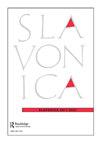Haunting and the Aesthetics of Trauma in A Woman in Berlin and For Those Who Can Tell No Tales: Redefining Cultural Memory
IF 0.1
0 HUMANITIES, MULTIDISCIPLINARY
引用次数: 1
Abstract
ABSTRACT This paper offers a comparative analysis of the aesthetics of trauma in the German film A Woman in Berlin and the Bosnian film For Those Who Can Tell No Tales, both of which address wartime rapes that happened in mid-to late twentieth century Europe. We use trauma studies as well as Avery Gordon's sociological theory of haunting to examine how two historical episodes of war-time rape (post-WWII Germany and late twentieth century Bosnia) have created ghostly effects that can be seen in the periodic return to these histories through artistic productions. Gordon argues that a traumatic past continues to co-exist with the present in the form of ghosts; thus, we need to produce case studies of haunting that attend to the social and political effects/affects of the ghostly and how they complicate our accounts of social trauma and oppression. We focus on: (1) the national and transnational reception of the two narratives; (2) the films’ similarities and differences regarding the cinematography of trauma, narrative styles used and female agency; and (3) masculinity and the male voices’ ‘right’ to tell a story. We conclude by addressing the limits of representation in both films and their role in challenging the dominant cultural memory.闹鬼与创伤美学——《柏林女人》与《不讲故事的人》:文化记忆的重新定义
本文对德国电影《柏林的女人》和波斯尼亚电影《为了那些无法诉说的人》中的创伤美学进行了比较分析,这两部电影都讲述了发生在二十世纪中后期的欧洲战时强奸事件。我们使用创伤研究以及艾弗里·戈登的困扰社会学理论来研究两个战时强奸的历史事件(二战后的德国和20世纪后期的波斯尼亚)是如何创造出幽灵般的影响的,这些影响可以通过艺术作品定期回归这些历史中看到。戈登认为,创伤的过去以鬼魂的形式继续与现在共存;因此,我们需要对幽灵的社会和政治影响进行案例研究,以及它们如何使我们对社会创伤和压迫的描述复杂化。我们关注:(1)两种叙事的国内和跨国接受;(2)影片在创伤摄影、叙事风格、女性主体等方面的异同;(3)男子气概和男性讲述故事的“权利”。最后,我们讨论了这两部电影中表现的局限性,以及它们在挑战主流文化记忆方面的作用。
本文章由计算机程序翻译,如有差异,请以英文原文为准。
求助全文
约1分钟内获得全文
求助全文

 求助内容:
求助内容: 应助结果提醒方式:
应助结果提醒方式:


